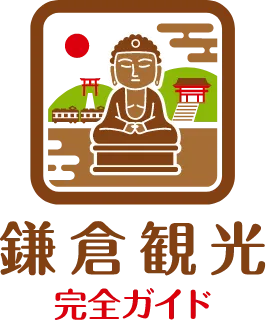Engaku-ji Temple (円覚寺)
Discover Engaku-ji Temple (円覚寺)
Engaku-ji Temple was established in the late 13th century by Hojo Tokimune, the fifth regent of the Kamakura shogunate, as a Rinzai Zen Buddhist temple. Its full name, Zuirokuzan Engaku Kosho Zenji, refers to the auspicious appearance of a white deer during its founding ceremony. The name “Engaku” originates from the Engaku-kyo sutra, which was discovered on the temple grounds.
Ranked second among the Five Great Zen Temples of Kamakura, Engaku-ji Temple is a nationally significant center for Zen practice. Its founding abbot, Mugaku Sogen, came from the Southern Song Dynasty, and his teachings were inherited by Zen master Muso Soseki, influencing Japanese culture and arts profoundly.
Architectural and Scenic Highlights
The temple complex is laid out in a straight line, reflecting the orderly simplicity of Zen architecture. The Sanmon Gate symbolizes the “Three Gates of Liberation” and is an Important Cultural Property of Kanagawa Prefecture. The Buddha Hall enshrines the Crowned Shakyamuni Buddha, and its ceiling features a striking white dragon painting by Tadasu Moriya under the supervision of Seison Maeda.
The Shariden Hall, an iconic example of Chinese-style architecture, is the only building in Kanagawa Prefecture designated as a National Treasure. It houses a crystal pagoda said to contain a relic of the Buddha’s tooth. Another National Treasure, the “Ogane” bell, cast in the early 14th century, bears inscriptions wishing for national peace.
Gardens such as Myoko Pond and Shirasagi Pond are attributed to Muso Soseki and offer seasonal beauty, especially the vivid autumn foliage from late November to early December.
Cultural and Spiritual Significance
Engaku-ji Temple was built to console the spirits of those who perished during the Mongol invasions and to pray for peace throughout the land. These values are still alive today through zazen meditation sessions and Dharma talks held at the temple.
It also has a notable connection with martial arts, particularly karate. A stone monument inscribed with “There is no first attack in karate” stands on the grounds, symbolizing the shared spirit of Zen and martial discipline.
Omikuji, Goshuin & Unique Traditions
Visitors can collect goshuin (temple stamps) from various sub-temples, each with unique artistic designs. Original goshuin books are also available. Once every 60 years, a rare and sacred ceremony called the “Ogane Benten Festival” is held at the Benten-do Hall.
How to Get There from Tosh’s Place (トシズプレイス)
Engaku-ji Temple is about 15 minutes from Kamakura Station by train and on foot. From Tosh’s Place (トシズプレイス), the access is convenient and pedestrian-friendly. Comfortable shoes are recommended due to stairs and slopes on the temple grounds. The temple is open from 8:00 a.m. to 4:30 p.m., with seasonal variations.
Best Times to Visit
Mornings offer a peaceful atmosphere with fewer visitors, allowing you to fully embrace the Zen ambiance. The peak time for autumn leaves is from late November to early December, while spring features cherry blossoms and vibrant greenery. Guests at Tosh’s Place (トシズプレイス) can make the most of their flexible morning hours to explore the temple quietly.
Nearby Attractions
Within walking distance are other historic temples, such as Kencho-ji Temple (建長寺), Tokei-ji Temple (東慶寺), and Jochi-ji Temple (浄智寺), allowing for a Zen-focused walking itinerary. Local cafés and bookstores along the Kamakura Kaido road also offer charming stops.
Who Should Visit?
- Those interested in Zen philosophy and spiritual practice
- Travelers fascinated by history, architecture, and art
- Early risers seeking a calm, reflective space
- Visitors wanting to experience sutra copying or zazen
- Nature lovers chasing the seasonal beauty of Kamakura
- Guests at Tosh’s Place (トシズプレイス) who value quiet, independent exploration
Wrap-Up: The Essence of Zen in Kamakura
Engaku-ji Temple is a serene and culturally rich destination where Zen, architecture, and nature harmonize. Take advantage of early or late hours for a more personal experience. The freedom offered by your stay at Tosh’s Place (トシズプレイス) lets you truly connect with the spirit of Kamakura’s Zen heritage.
